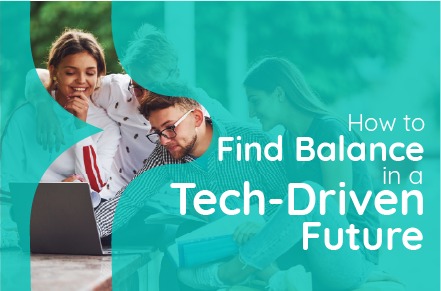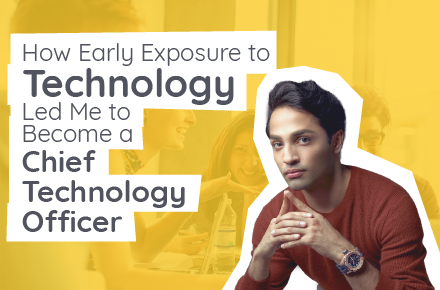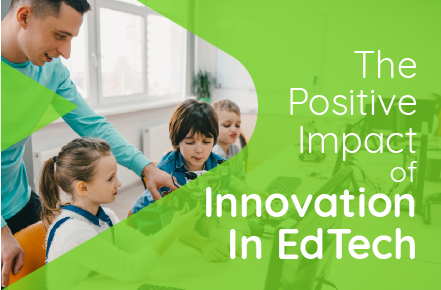Last year the world changed forever due to the COVID-19 pandemic. Public spaces closed, public services and establishments shut down, schools closed, and people stayed home. As an educator, this time for my colleagues and me meant that we needed to ramp up and equip ourselves with skills to continue to teach our students virtually. The transition into Virtual Learning has been a challenge professionally, emotionally, and mentally for many of us. We’ve been challenged with coping with the vulnerability this time brings, managing our capacity, and supporting the academic success of our students.
Personally, when the pandemic hit, the newfound teaching experience of Virtual Learning served as a chance to recenter me and cultivate peace and balance in my home. The more I made this self-discovery, I realized how draining physically being in my school environment at the time was and how it was negatively taking a toll on my well-being physically, mentally, and emotionally.
I used to teach at a charter school in North Philly that is considered a “renaissance school,”; meaning the charter system in this school has been implemented to revitalize the school’s performance through the charter network’s systems, operations, and academic standards. In the last blog, I shared that I also attended a charter high school. However, the charter school I attended was extremely different from where I taught; its school environment consisted of different demographics, administrative structures, and academic standards.
The school I attended growing up was based in Southern California. Its student body was very diverse, each grade had a full administrative staff (including an Academic Counselor) that stayed with your graduating class from 9 – 12 grade, and the school was an individual charter school, not a part of a charter network; which afforded it the privilege to optimize academic and learning standards very efficiently.
This school’s environment has a college-prep-centered culture, and while there, I was able to cultivate a strong foundation of independence, self-accountability, and responsibility with my autonomy. Geographically, this school is located in a middle class predominantly white area. Still, because it is a public charter school, students from all backgrounds can apply and attend throughout the city’s county.
As a daughter to a Black single mother from Philadelphia, who moved to California to afford her children better opportunities, I’m fully aware of how her decision allowed me to benefit from having closer proximity to White Americans through academia. I often wonder how different my life would have been if my mom stayed in Philadelphia to raise my sister and me. I imagine my understanding of myself, my confidence, and my perspective would be different. But it’s beautiful how things come full circle because now I live in Philadelphia, close to family, and I’m blessed to serve a purpose through teaching techniques and to share insights from my experiences.
In contrast to how I grew up, the charter school I taught in North Philly predominantly served African American and Hispanic students. It is a part of a large charter network of schools, academic subjects – not grade level, organized its administrative structure, and assigned grade-level social workers – not Academic Counselors. This school’s environment has a policy-centered culture that focuses students and staff on meeting the charter network’s school administration and behavioral management standards.
While teaching there, I witnessed students, families, and staff persevere through numerous inconsistencies in school policies and academic practices. Unfortunately, witnessing this made me understand and appreciate why my mother raised my sister and me in Southern California. In comparison to my high school experience, the experience my students had was less stable and did not prepare them as well as I was for the “real-world” at their age.
Like many charter schools in predominantly Black and Latino communities that are underserved throughout the US, this school’s systems are presented to revitalize its academic community, but the nature in which they are implemented are over-policing the students, families, educators, and faculty within it; thus creating a hostile environment. These dynamics ultimately take a great deal away from the youth of color’s personal development and further disenfranchise communities of color through academia.
Learning Loss in 2020
On March 13th, 2020, two pivotal moments occurred in my community – Breonna Taylor was murdered by police who invaded her home, and the school I was teaching at shut down due to the emergence of COVID-19. This was nearly a month after Ahmaud Arbery was gun down and murdered by racist White American civilians in his neighborhood.
These events were like a domino effect in my academic community that set the stage to host conversations about the negative effects of school policing that we’d usually have privately. Bold teachers came together to have open conversations about how the charter network’s disciplinary systems nurture our students to be policed and misinformed and lay the foundation for their matriculation into the prison system instead of constructive and enfranchising post-secondary success.
The reality is that charter school networks, like the one I worked at, in underserved communities throughout the U.S. are predominantly presented to families of color as a higher quality option for public education instead of city public schools. The corporate and administrative faculty members that lead these kinds of charter school networks to rely on families of color being ignorant to the realities of how their local schools are operated, and their desperate desire to expose their children to greater opportunities within their means; to profit from meeting attendance quotas that are subsidized by government funding when families send their children to these schools.
This reality is a tough pill to swallow, but it is where America’s education system is for the youth of color in underserved school communities. Historically, the education of the youth of color, particularly Black youth, has been disenfranchising. Dating back to it being illegal for Black people to even read during slavery, to the formalization of Black schools that predominantly taught labor trades in the Reconstruction Era; the education of the youth of color in America has been rooted in controlling Black bodies and other subjugated communities – starting with the mind.
The Civil Rights Era achieved integration of America’s school systems; that time made a constructive impact on galvanizing the integration of other parts of society. However, many Americans, mainly White Americans, who were, and some still are, opposed to integration, have created systems that have diverted investment out of academic programs and institutions that once served predominantly white students; simply because students of color are a part of the population, and now are predominantly serving them.
Due to this discriminatory divestment, what’s happening in the schools that serve students of color in underserved school communities is similar to that of a rose growing out of concrete. Imagine the student as that rose. Once that rose is plucked, another rose grows in that very same concrete. Instead of growing back as a multitude of flowers and lush greenery that would revitalize the environment that rose grows in, its surrounding remains the same concrete – broken, imbalanced, and malnourished.
In underserved school communities, many students, and the faculty supporting them, exist in oppressive environments. The operations they must facilitate lack mindfulness; as a result, our students are not receiving the appropriate and practical treatment to ensure them a better future. This cracking foundation inevitably is doing a disservice to youth of color and putting them in a position where they’ll disproportionately experience severe learning loss during Virtual Learning in the COVID-19 pandemic.
Before the pandemic, the charter school I taught at mandated numerous policies and systems that diverted the focus of students, parents, and faculty away from the core principles of youth development. Most of the school’s rules and policies revolved around controlling students’ movement throughout the building and using excessive micromanagement to enforce their compliance with those rules. In theory, these rules were presented to ensure students were “ready to learn.” Still, the design and implementation of these rules created such a hostile environment that core elements of effective teaching and learning – such as relationship building, compassion, transparency, autonomy, and accountability – were never established to achieve academic success.
Once the COVID-19 pandemic emerged, these same systematic discrepancies transformed into even larger issues with Virtual Learning. Students in underserved school communities are experiencing more severe learning loss during the COVID-19 pandemic because they were already experiencing learning loss and being misinformed and misguided before it, based on how poorly their school communities have historically been structured and operated.
In the emerging conversation around learning loss, many claims there shouldn’t be much learning loss based on the assumption that learning at home should be just like learning at school. But what if your school is poorly administered and you didn’t already have a substantial and sustainable model to look to or follow to create an effective learning model at home? This is the reality for students of color in underserved communities, and it’s creating more inequities for our community in the long run.
I firmly believe learning starts at home and that schools provide standardized guidance and academic structure to aid families throughout the youth development process. Our families and students care for their well-being and seek adequate guidance to ensure our community has a greater quality of life and a brighter future through education. But to achieve this, I think there are a variety of solutions that need to be adopted on a structural level to provide families of color a more trustworthy schooling model; here are some of those solutions:
Mandate adequate budgets for guidance counselors
In many schools in underserved areas, budgets for orchestrating school culture systems and academic pathways are allocated towards salaries for administrators or youth development staff, such as Assistant (Associate) Principals, Social Workers, and Dean staff; but rarely are these budgets designated for providing grade-specific Academic Guidance Counselors. As a result, most functions, like course load planning, attendance monitoring, and post-secondary planning, that would usually be the job of a guidance counselor are operated by Assistant Principals and Dean staff who do not have the educational background that would qualify them to facilitate these guidance counseling practices to aid a student’s matriculation into post-secondary success properly.
This dynamic also creates a conflict of interest when school administrators are pressured to pass students along to the next grade to meet attendance and grading quotes when planning student’s schedules. Investing in having strong Academic Guidance Counselors can help afford students of color a fairer chance at gauging and monitoring their academic progress.
Mandate cultural competency and anti-racism training
White American civilians who are leaders and faculty in school communities that serve students of color in underserved schools do not embody the genetic obligation most people of color feel to further the enfranchisement of people of color at large. Therefore, I think white academic leaders and faculty must learn about systemic racism and its effects on people of color to provide them insight into the weight of their decisions. Their daily decisions in schools affect the enfranchisement of the youth of color, and it is time for them to be held accountable to make more mindful, empowering.
Constructive decisions in school communities that serve students of color and predominantly white schools to produce more conscious white youth who can be more mindful in living in a society with people of color. Mandating these training sessions can also help teachers gain more compassion and understanding for their students in Virtual Learning to sustain their academic success and reverse learning loss.
Focus disciplinary practices on affirming accountability of students and staff instead of on reprimanding
In my experience teaching in the charter school system, many rules focused on controlling student behavior instead of creating autonomy for students to become smarter decision-makers. Systems that eradicate a student’s individuality, like school uniforms and identification cards, or make them feel targeted, like metal detectors, stifle students from gaining confidence in who they are intrinsically and lead them to assume the worst of themselves when they aren’t compliant.
When students are reprimanded for being non-compliant, a piece of their spirit is murdered. They lose a sense of self and the opportunity to leverage their uniqueness to inform their personal decision-making. This mitigates the development of their personal accountability. As a result, they are brought up with a contentious relationship with authority and are not properly guided to make better informed (or resourceful) decisions independently in the long run. This leads to disproportionate incarceration for the youth of color in adulthood and further perpetuates the school-to-prison pipeline.
The lack of adequate accountability systems in the school is a huge influence on why students are struggling to model their academic success in Virtual Learning, leading to substantial learning loss. With stronger and more accountable systems, students and families can receive proper guidance to aid youth development.
There is nothing new under the sun; these solutions I’ve shared are just a few common sentiments amongst Abolitionists in education. It is important to consider how these solutions can change the overall culture and environment of schools serving students of color in underserved communities. That change can provide a respectable model for students and families to adopt to limit and reverse learning loss in their at-home learning environments. There is so much that can be gained from teaching students how to use technology to empower themselves. It would be unfortunate if we took this time for granted and overlooked the opportunities to grow ourselves and our youth.
As the conversation around learning loss during this time emerges, I encourage us all to be mindful of the different factors that affect one another, step out of our own perspectives, and think holistically about how learning can be made more equitable for marginalized students; because we are living through a pivotal moment in history and the education of all our youth will immensely impact the future conditions of society and humanity.
Blog Post Inspirations:
Education Liberation Network
Bettina Love
Melanated Educators
Caucus of Working Educators
Angela Crawford – Check out a profile article on her in The Atlantic!
Sharif El-Mekki – Check out his opinion articles on EdWeek!
Center for Black Educator Development
We Are Tech’s “Let’s Talk About Equity” panel discussion on Investing in Families of Color from Pre-K thru 12









